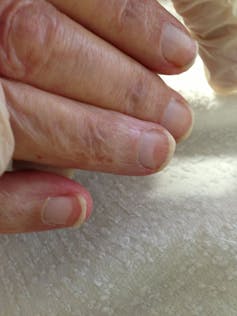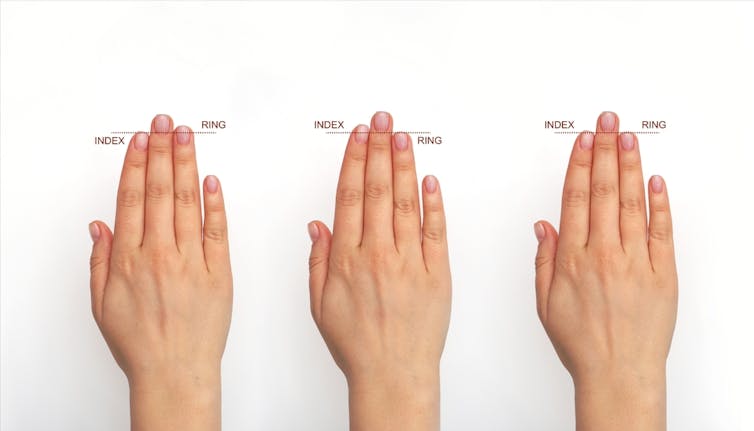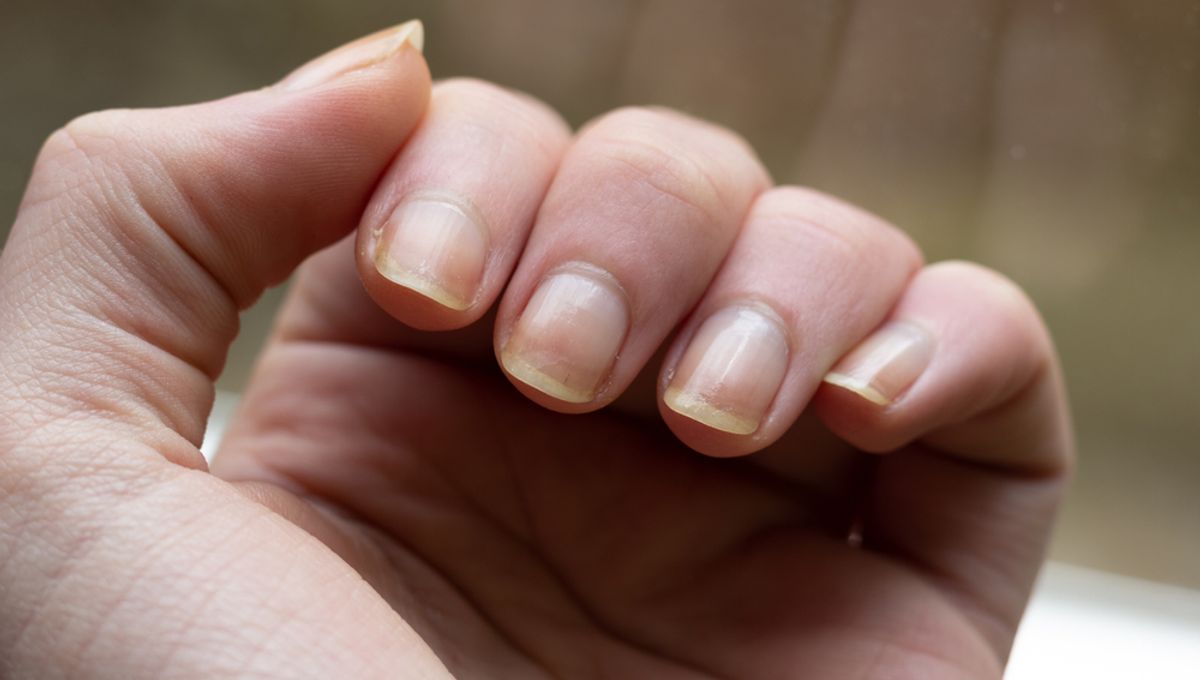Did you know that your hands can reveal a lot about your health? This fascinating insight has been recognized since the time of Hippocrates, the father of modern medicine.
In fact, Hippocrates himself first described a condition called “clubbing” over two thousand years ago. This condition, where the nail takes on the shape of an upside-down spoon, is still considered a sign of disease today. While it was initially associated with empyema, a condition where pus fills the space between the lungs and the membrane around it, clubbing is now linked to various other diseases such as cystic fibrosis, cirrhosis of the liver, and thyroid conditions.
Another nail change that can indicate underlying health issues is Lindsay’s nails. These nails appear half white and half reddish brown, and they are found in around 50% of people with chronic kidney disease. However, they can also be a sign of cirrhosis of the liver and Behcet’s disease, a rare condition that causes inflammation of the blood vessels.
Terry’s nails, characterized by a ground-glass appearance, can also be a sign of cirrhosis of the liver. However, they are also associated with type 2 diabetes, kidney failure, and HIV.

Hojasmuertas/Wikimedia commons, CC BY-SA
And let’s not forget about Muehrcke’s nails, which are characterized by horizontal lines running across the fingernails. This pattern indicates a decrease in the most abundant protein in the blood, albumin. Muehrcke’s nails can be an indicator of kidney disease.
While changes in nail color and pattern can sometimes be signs of aging, there are instances where they indicate more serious health conditions. For example, Neapolitan nails, which have three distinct color zones, are often seen in people over the age of 70 and are generally nothing to worry about.
But it’s not just the nails that can reveal important health information. The palms of your hands can tell a story too.
If you find your palms becoming sweaty without any apparent reason, it could be due to faulty nerve signals causing the sweat glands to become overactive. This condition, known as primary hyperhidrosis, is usually benign. However, unexplained sweaty palms, along with sweating on the face, neck, and armpits, can be a sign of thyroid problems.
Hyperthyroidism, where the thyroid gland produces an excess of thyroxine, can cause bodily processes to speed up and result in sweaty palms. Fortunately, this condition can be easily treated with the right medication.
Another concerning palm change is the appearance of small areas of red or purple discoloration on the palms and fingers. This can be a sign of bacterial endocarditis, which has a high mortality rate. These discolorations come in two forms: Osler’s nodes and Janeway lesions. Osler’s nodes are typically painful red nodules on the fingers, while Janeway lesions are irregularly shaped and seen on the palms. Both of these patterns require urgent medical attention.
Have you ever experienced persistent pins and needles in your hand?
If you have, it might be a sign of carpal tunnel syndrome. This condition occurs when the median nerve in the wrist is compressed, leading to numbness, tingling, or pain. While carpal tunnel syndrome often improves without treatment, using a wrist splint can help relieve pressure on the nerve. People who are overweight or pregnant are at a higher risk of developing this condition.
Pins and needles in the hand can also be a sign of diabetes. Elevated blood sugar levels in diabetes can cause nerve damage, resulting in tingling or numbness in the hands. This condition is known as diabetic neuropathy. If you frequently experience pins and needles or if it persists for a long time, it’s important to see your doctor.
Did you know that the length of your fingers can provide insights into your health?
The ratio between the length of your index and ring fingers can indicate your risk of developing certain diseases later in life. In women, the index and ring fingers are usually fairly equal in length, while in men, the ring finger is typically longer than the index finger. This difference is believed to be influenced by hormone exposure in the womb.









